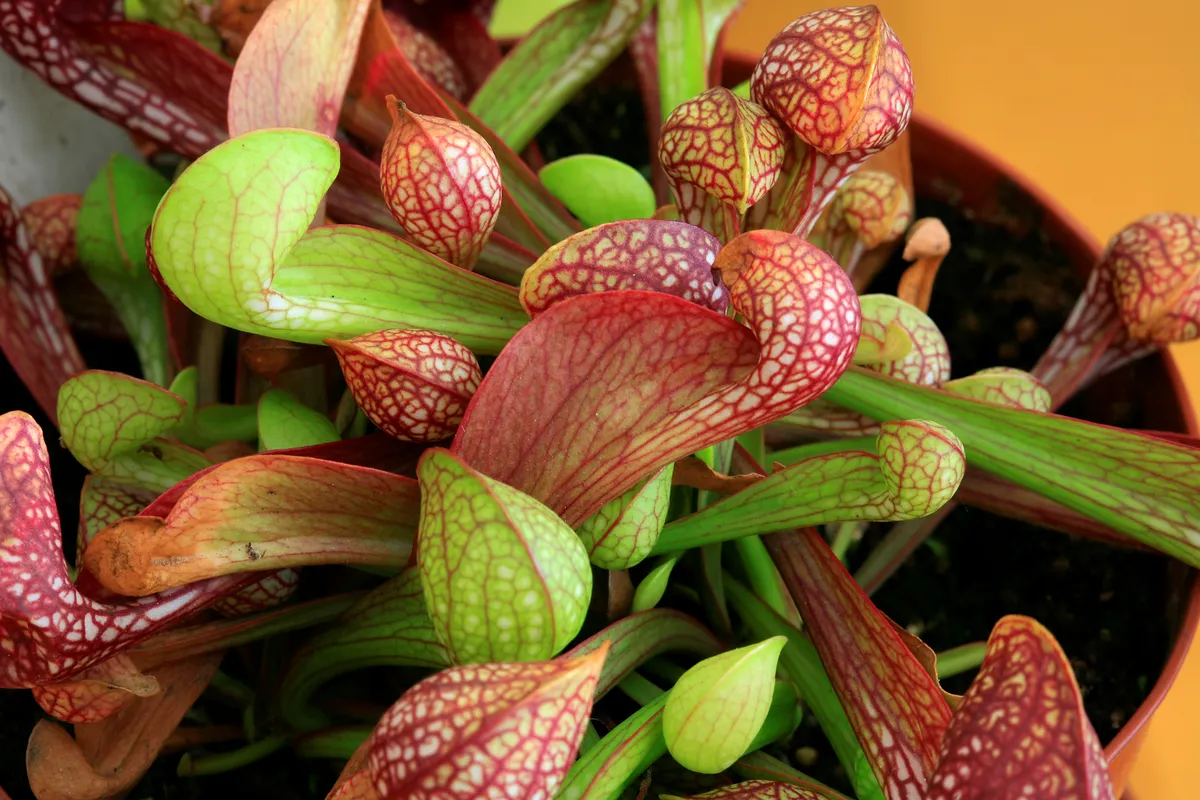“House plants are out of favour. I get dozens of press releases every month about vegetables, fruit and ornamentals for the garden, but something on indoor plants is rare indeed.” I wrote those words in 2012: back then, every garden centre I visited seemed to be downsizing or scrapping its house plant sections, and friends considered me a bit of an oddball for filling my house with pots of greenery.
Fast forward, and how things have changed. Cacti and succulents adorn the tables of every coffee shop, Instagram is awash with images of fiddle leaf figs, and Swiss cheese plants have a cachet just as potent as the latest mobile phone. I started growing house plants as a child in the late 1970s, when the last house plant craze was in full swing. Many aspects of the current trend are familiar to me, even though they have been given a 21st-century twist. Macramé hangers for plants now come in neon shades; bottle gardens made from green glass carboys and demijohns have been replaced with sculptural glass jars and lanterns; African violets are out, brightly coloured succulents are in.

Why the revival? Fewer young people now own their own place, and homes with outside space are a luxury many can’t afford
But why the revival? I think it’s down to a number of factors, but high on the list is the fact that that fewer young people now own their own place, and homes with outside space are a luxury many can’t afford. Meanwhile modern growing techniques allow an ever-increasing house plants to be sold at ever cheaper prices, meaning beauties such as Nepenthes, the tropical pitcher plant, can be bought at a local garden centre for the price of a round of drinks at the pub, where once it was something only the most well-heeled grower could afford.

Monstera or Swiss cheese plant
Social media has also been a big amplifier of the house plant gospel. While it’s hard to make a beautiful garden border full of flowers look good in the tiny square of an Instagram post, a fenestrated Monstera leaf splashed with cream and green looks stunning on a mobile screen. Variegated foliage is certainly leading the trend, although interesting leaf shapes, textures and colours, particularly those of succulents, are also selling fast. Rosette-shaped Echeverias, furry Kalanchoes and the curious string of pearls, Curio rowleyanus, are all highly prized.
There’s also a burgeoning cash-free culture around the swapping of house plants and cuttings
The places where people buy house plants has also changed considerably since I was picking up parlour palms in my local Woolworths and cacti from jumble sales. Online players have entered the market, offering new models for house plant ownership, including monthly subscription boxes, rare aroid auctions and pairing plants with house plant accessories such as containers and misters. House plant shops have sprung up in most major cities and towns in response to the demand for indoor greenery, but plants are also sold in supermarkets, trendy clothing stores and market stalls. Some particularly desperate growers are resorting to importing rare, in-demand plants direct from Thailand, while others are taking advantage of the demand for some plants by selling cuttings to fellow enthusiasts for large sums. On the other hand, there’s also a burgeoning cash-free culture around the swapping of house plants and cuttings, with swaps popping up around the country and on virtual platforms such as Facebook.
This new generation of growers really wants to understand how their plants work
It’s often assumed that people who are new to the house plant world aren’t interested in the finer points of botany. In my experience, nothing could be further from the truth: from biological controls to botanical Latin, this new generation of growers really wants to understand how their plants work in order to help them thrive. The internet allows people to research their plants in great detail, track down rare specimens in minutes and connect with other enthusiasts in a way that hasn’t been possible before.
Am I annoyed that a lifelong passion of mine has now seemingly been taken up by so many others? Of course not. It’s a hugely exciting time to be a house plant fan. I love the way that the plants I love have now become objects of desire for those other than me: it means there are lots more opportunities to share advice, cuttings and commiserations when things go wrong. Because there is one thing that hasn’t changed: everyone still kills the odd specimen, even old hands like me.






